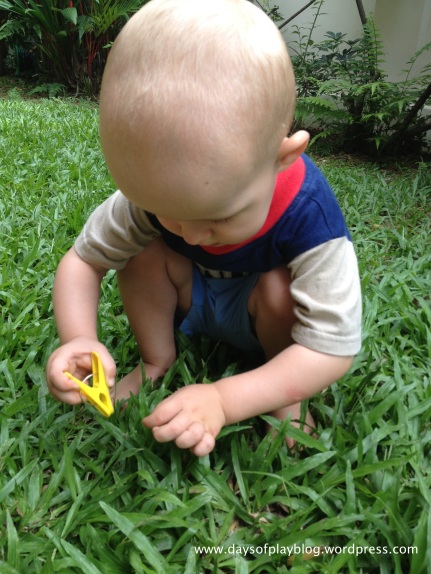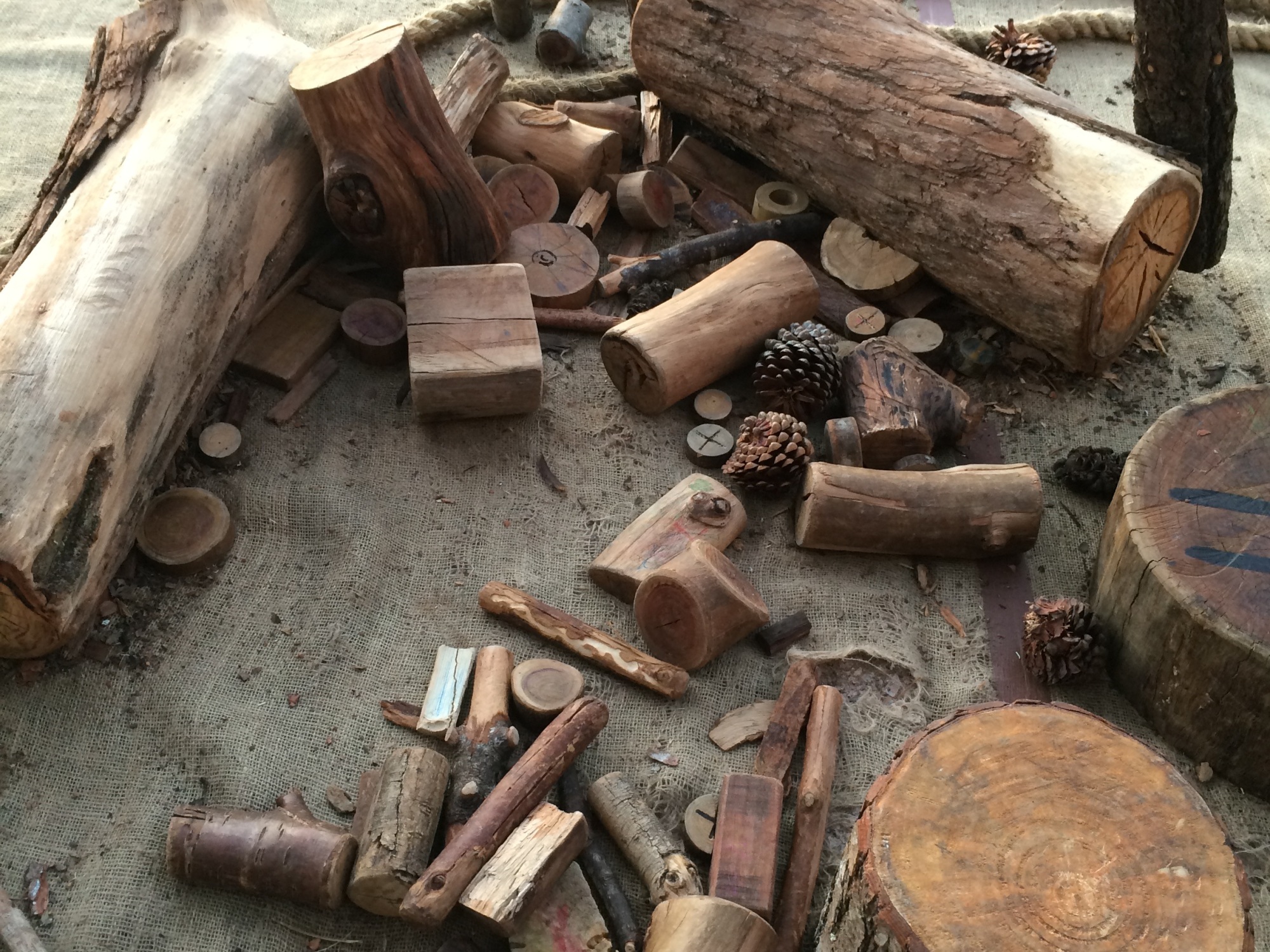Part-way through my teaching career, I had the opportunity to move into the early years department of my school. I had spent many years teaching in the mid to upper primary, but had begun getting the feeling that the early years were where it was really at.
And I was correct – the early years of a school are where you can see learning happening right before your very eyes. You can feel it, smell it, breathe it, sometimes even get hit in the face by it. The littlest people of the school do the most amazing learning every moment of every day.

My colleagues still laugh about my first Mathematics session in Grade One. Think chaos with a multitude of differentiated learning goals. All across the classroom, kids were giving up after getting lost with my multi-step instructions and incorrect assumption that dice should be thrown in your general vicinity, not at your partner’s head.
But I did get one thing right in my first days as an early years teacher.

The Invention Station
Each morning, my kids would arrive and race to the one box of building blocks I had in the classroom. Some kids would draw. Some would read. Some kids would just sit and chat. Nobody at all would pick up one of the many high-quality resources of our classroom.

I set up what I called our “Invention Station” because I had a hunch that some of my kids would enjoy more opportunities to create stuff than my one box of blocks provided. I started it by leaving empty boxes, tape, string and some straws on a shelf. It ended up including 8 shared storage areas, specialty items from the hardware store, and projects that lasted weeks.
The theory of loose parts
Turns out I was employing architect Simon Nicholson’s theory of loose parts. His theory says that the more variables (or loose parts) in an environment, the more opportunities for interaction, discovery and creativity. (See the original 1972 article here)
By providing my students with resources that could be redesigned, constructed with, used in many different ways, reimagined, experimented with, I was also giving them endless opportunities to play in ways that they saw fit. There was no right or wrong way to use any of these materials – you could tinker with them any way you could imagine!

They came with no instructions, and instead left room for my students to make their own discoveries. What a powerful experience, to have the authority to discover connections and new creations by yourself. I believe this was a huge factor in the appeal of my early “Invention Station” – it was owned and organised by my students, giving them a small patch of their daily lives to arrange and direct as they saw fit. Away from the rigidity of single-purpose play structures in the playground. Away from my superfluous instructions in Mathematics sessions.

A love of loose parts
Simon Nicholson’s idea that children love to interact with variables was one that then influenced my classroom practice in a great way. My love of loose parts has allowed me to see how children discover and learn, how children share resources, and how they persist (or don’t!).
My love of loose parts in my classroom helped to set the perfect scene for risk-taking. There was never a right way or wrong way, never a best way or a crazy way. Loose parts invite experimentation and creativity for a variety of play types. A plastic sword is generally used as a sword in dramatic play. A stick, however, could be a sword in dramatic play (or a tent pole, or a fishing rod, or for writing in the dirt, or a javelin, or a marker for a race start…) or the beginning of a shelter in constructive play.

Loose parts play requires complex, abstract thought. How else are you going to play with a robot, that is really a button, for 45 minutes and involve others in your play? You need to be flexible, be willing to make changes, and have a willing imagination to play with loose parts.

Loose parts in our house
While I have been somewhat intentional with the loose parts I have put in front of my son for his play, his favourite loose parts are the ones he has found himself. A discarded ribbon, red seeds from his school playground, straws from the kitchen drawer, the pump from a soap dispenser.

Sometimes they stick around for years (he has played with the same clothes pegs since he was 18months old) and other times they cease to be significant by the end of the day. But the searching, close to the ground, pockets ready to be filled, is always the sweetest feeling.

The most successful loose parts in my classrooms/home:
- seed pods
- small stones
- glass stones (the ornamental ones you would use in a vase)
- cotton tips
- recycled packaging
- string
- fabric scraps
- empty Nespresso coffee capsules
- shells
- buttons
- ribbon
- drinking straws
- chopsticks
- cupcake liners
The biggest loose parts fails I’ve had in my classroom/home:
- confetti – why did I think giving six year olds a big box of tiny pieces of shredded paper would be without drama?
- petals – they wilted before the kids arrived to class
- dried lentils outside – those things were tricky to pick out of the lawn, though I have used them successfully indoors with older kids

The best places to find loose parts:
- Outside.
Some of my best seed pod finds have been on an early morning walk, where in the half-light I often wonder if I am about to pick up a cool seed or something unsavoury.
Natural environments are full of loose parts. Things to be reimagined and moved and picked up and played with in a trillion ways.
- Discount stores. I’ve purchased bags of small wooden pegs, ribbon and drinking straws at Daiso here in Singapore for low cost.
- Your recycling bin at home. Odd shaped jars, boxes, tubes, plastic netting.
- Recycling stores like Reverse Garbage in Sydney. This place is heaven for loose parts lovers.
So, instead of creating the play for your child by offering them toys and experiences with one-dimensional play equipment – offer them loose parts instead and let them direct their own play!

Other great reads about loose parts play:
- Ideas for using loose parts in your childcare setting from Penn State College.
- The learning that occurs with loose parts by Community Playthings.
- The super-smart Juliet Robertson on considerations for your centre when using loose parts.
- The Sydney Playground Project, by University of Sydney, bringing loose parts to Sydney primary school playgrounds.
- The team who started me off on my play journey, Inspired EC, offering webinars in loose parts! Perfect!
- Niki Buchan on using the loose parts nature that provides.


Great article. you have reinforced what I already know and do in my kindergarten. Now to get it into some schools. I will follow up on some of your links. Love and Peace… Neta
LikeLike
Hi Lisa, I am a participant in your last workshop at the Playeum. Enjoyed reading your entries and feeling inspired to introduce nature and loose parts in my classroom. Thank you. Looking forward to reading more stories and articles from you. 🙂
LikeLike
Hi Liana, thanks for stopping by the blog! It’s so great to hear you are feeling inspired to introduce natural loose parts into your classroom. Please feel free to pop photos of what you have achieved on the Days of Play’s Facebook page (www.facebook.com/daysofplay), for others to learn from what you do! Thanks again, Louise
LikeLike